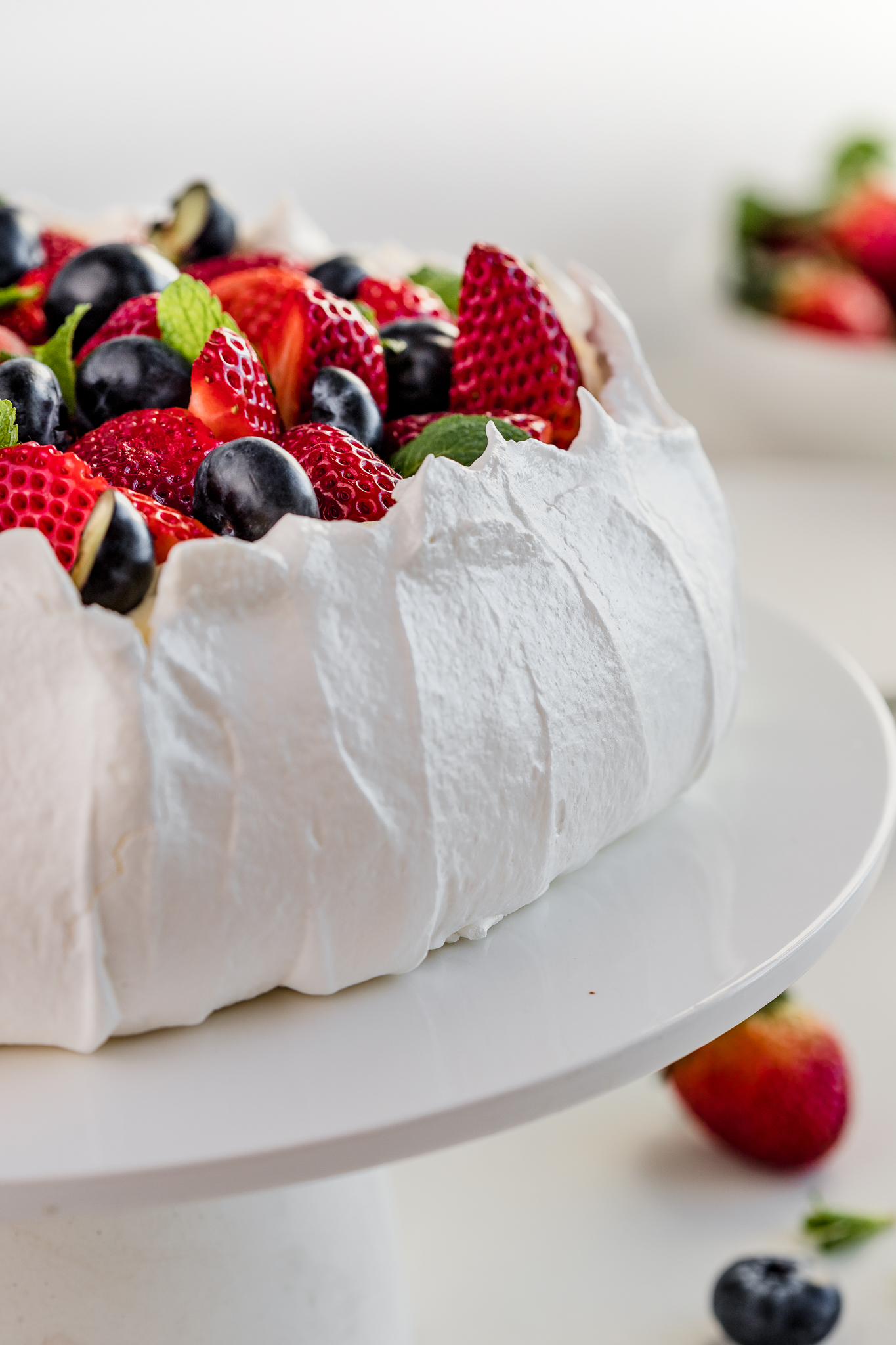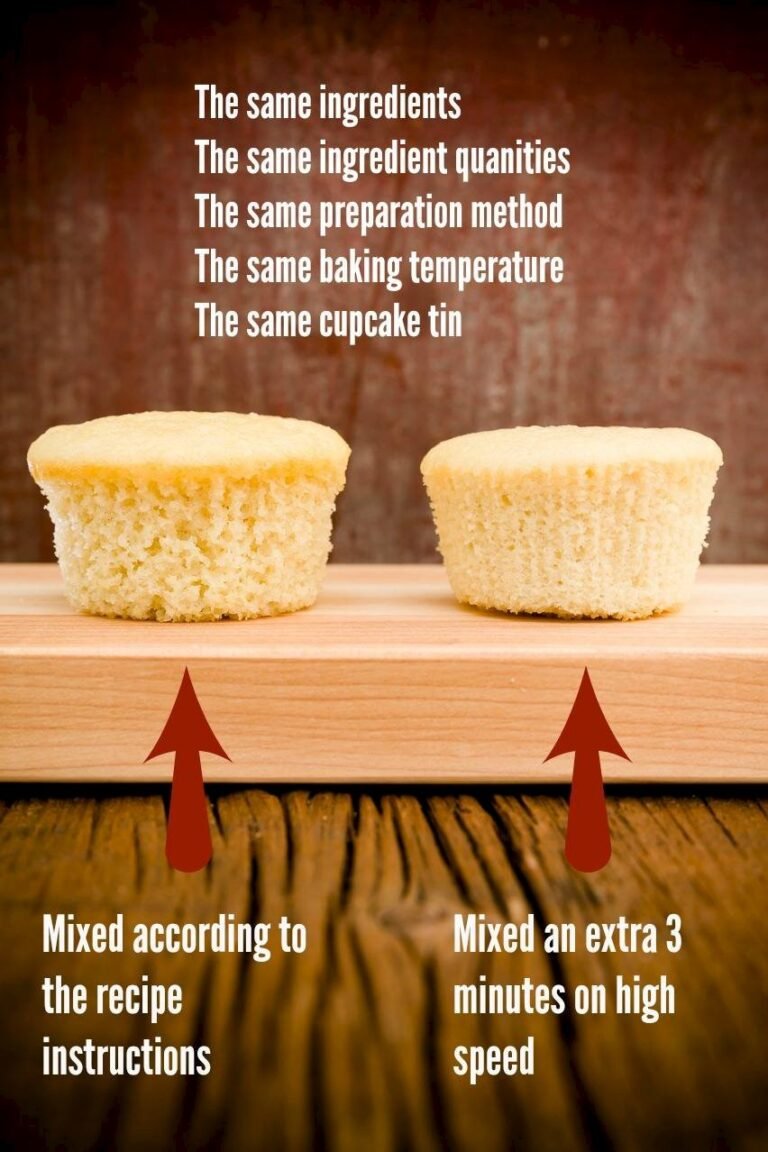How Long Should You Leave Cake in Oven After Baking: Key Tips
After baking, leave the cake in the oven for about 10 to 15 minutes. This resting period helps firm up the structure and improves flavor.
Baking a cake is a delightful process, but knowing how to finish it is crucial. After baking, it’s tempting to remove the cake immediately. However, letting it sit in the oven for a short period makes a significant difference. This resting time allows the cake to set properly, preventing it from collapsing or becoming too moist.
It also enhances the flavor and texture. Understanding the right cooling method can elevate your baking game, ensuring that every cake you make is a success. Follow these simple steps for the best results, and enjoy your delicious creation!
The Importance Of Baking Time
Baking time is crucial for achieving the perfect cake. Proper timing ensures that your cake rises, bakes evenly, and develops a delightful texture. Too long or too short baking can ruin your efforts. Understanding baking time helps you create delicious and visually appealing cakes.
Factors Affecting Baking Duration
Several factors influence how long to bake your cake:
- Oven Temperature: Accurate temperature is vital. An oven that’s too hot can burn the cake.
- Cake Size: Larger cakes take longer to bake. Smaller cakes cook faster.
- Batter Thickness: Thicker batters require more time. Thin batters bake quickly.
- Pan Material: Dark pans absorb heat, baking faster. Light pans reflect heat, baking slower.
- Altitude: Higher altitudes can affect baking time. Cakes may need adjustments in time and temperature.
Consequences Of Over Or Under Baking
Getting baking time wrong can lead to several issues:
| Type of Baking Error | Consequences |
|---|---|
| Under Baking |
|
| Over Baking |
|
Monitoring your cake closely will help prevent these problems. Use a toothpick to check for doneness. Insert it into the center. If it comes out clean, the cake is ready.
Typical Baking Times By Cake Type
Understanding typical baking times for different cake types is crucial. Each type of cake has its own requirements. Knowing these times helps achieve the perfect texture and flavor.
Sponge Cakes
Sponge cakes are light and airy. They bake quickly compared to other types. Typical baking time ranges from 25 to 30 minutes.
- Use a toothpick to check for doneness.
- Insert the toothpick in the center.
- If it comes out clean, the cake is ready.
Dense Fruit Cakes
Dense fruit cakes take longer to bake. Their rich ingredients need more time to cook through. Typical baking time is between 45 and 60 minutes.
| Size | Baking Time |
|---|---|
| 8-inch round | 45-50 minutes |
| 9-inch round | 50-55 minutes |
| 10-inch round | 55-60 minutes |
Layer Cakes
Layer cakes are popular for celebrations. They bake quickly but still require attention. Typical baking time is around 30 to 35 minutes.
- Check doneness with a toothpick.
- Look for a golden color on top.
- Let the cake cool in the pan for 10 minutes.
Each cake type needs different baking times. Always adjust your timing for the best results.
Preheating: The Crucial First Step
Preheating your oven is essential for baking. It ensures even cooking and proper rise. Skipping this step can lead to uneven texture and incorrect baking times. Let’s explore why preheating matters.
The Role Of Oven Temperature
The right oven temperature is vital for baking success. Here’s why:
- Even Cooking: Preheating allows the entire oven to reach the set temperature.
- Proper Rise: Cakes need a hot environment to rise correctly.
- Texture Control: Preheated ovens help achieve the desired texture.
Different cakes require different temperatures. Always refer to your recipe for guidance.
| Cake Type | Recommended Temperature (°F) |
|---|---|
| Angel Food Cake | 350 |
| Chocolate Cake | 350 |
| Cheesecake | 325 |
Common Preheating Mistakes
Avoid these common mistakes for better baking results:
- Not Preheating: Skipping this step leads to uneven baking.
- Opening the Oven Door: This lets heat escape, affecting temperature.
- Ignoring the Timer: Wait for the oven to reach the set temperature before baking.
Take time to ensure your oven is ready. This step is critical for perfect cakes.
Testing Cake Doneness
Knowing how to test cake doneness is key to baking success. A perfectly baked cake is moist and fluffy. Underbaking leads to a gooey center, while overbaking makes it dry. Use reliable methods to check for doneness.
Skewer And Toothpick Methods
The skewer and toothpick methods are simple and effective. Here’s how to use them:
- Insert a toothpick or skewer into the center of the cake.
- Remove it carefully and check for residue.
Here’s what to look for:
| Result | Meaning |
|---|---|
| Clean | Cake is done |
| Few crumbs | Cake needs a few more minutes |
| Wet batter | Cake is underbaked |
Touch And Smell Indicators
Besides using tools, you can rely on your senses. Touch and smell can give great clues.
- Touch: Gently press the top of the cake. It should spring back.
- Smell: A delicious aroma fills the kitchen when the cake is done.
Trust your instincts. Use these methods together for best results. Enjoy the baking process!
Cooling Down: A Step Not To Skip
Cooling your cake is an important step. It ensures your cake achieves the best texture and flavor. Skipping this step can lead to a dry or crumbly cake. Let’s explore why cooling matters.
Structural Benefits Of Cooling
Cooling helps stabilize the cake’s structure. When a cake bakes, it expands. The heat causes the batter to rise. As it cools, the structure sets. This process strengthens the cake.
- Reduces shrinkage
- Prevents cracking
- Maintains shape
A well-cooled cake is easier to frost. It holds its shape better during decoration.
How Cooling Affects Texture
The cooling process affects your cake’s texture significantly. Warm cakes are often gummy. A cooled cake has a more pleasant mouthfeel. Here are some effects of cooling:
| Cooling Time | Texture Result |
|---|---|
| 10 Minutes | Warm and soft |
| 30 Minutes | Moist and fluffy |
| 1 Hour | Perfectly set |
Allow your cake to cool in the pan for about 10 minutes. Then, transfer it to a wire rack. This helps air circulate around the cake.

Post-baking: Leaving Cake In Oven
Knowing how long to leave your cake in the oven after baking can be tricky. The right duration can enhance your cake’s texture and flavor. Here, we’ll explore the pros and cons of this method.
Pros And Cons
| Pros | Cons |
|---|---|
|
|
Ideal Conditions For Resting In Oven
To get the best results, follow these guidelines:
- Temperature: Keep the oven at low heat, around 200°F (93°C).
- Timing: Leave the cake for 5 to 10 minutes.
- Moisture: Ensure the oven door stays closed.
- Type: Use this method for dense cakes, like pound cakes.
These conditions help achieve a balanced texture. Always monitor your cake to avoid overbaking.
Removing Cake From The Oven Safely
Removing a cake from the oven requires care. Proper techniques help prevent accidents. Follow these tips for a safe and smooth removal process.
Tools And Techniques
Use the right tools to safely remove your cake. Here’s a list of essential items:
- Oven mitts: Protect your hands from heat.
- Cooling rack: Allow proper air circulation.
- Spatula: Help lift the cake gently.
- Timer: Keep track of baking time.
Follow these techniques:
- Turn off the oven before removing the cake.
- Open the oven door slowly to avoid steam.
- Use oven mitts to protect your hands.
- Gently lift the cake using a spatula.
- Place the cake on a cooling rack.
Preventing Sudden Temperature Changes
Temperature changes can affect your cake’s texture. Sudden shifts may cause it to collapse. Keep these tips in mind:
- Do not place the hot cake on a cold surface.
- Avoid opening the oven door too often.
- Let the cake cool gradually in the oven for a few minutes.
Consider this table for temperature tips:
| Action | Effect |
|---|---|
| Remove cake from oven too quickly | May cause collapse |
| Place on a cold surface | Causes cracking |
| Cool in the oven | Stabilizes texture |
By following these tips, you can safely remove your cake. Enjoy your delicious creation without worry!
Storing Your Cake Post-baking
Properly storing your cake after baking is crucial. It keeps the cake fresh and delicious. The right storage method depends on how soon you’ll eat it.
Short-term Storage Tips
For cakes meant to be eaten soon, follow these tips:
- Cool the Cake: Let it cool completely on a wire rack.
- Wrap it Up: Use plastic wrap to cover the cake tightly.
- Use a Cake Dome: Place it in a cake dome for extra protection.
- Room Temperature: Store it at room temperature for 2-3 days.
These methods keep your cake moist and flavorful.
Long-term Preservation Strategies
If you want to store your cake for longer, try these strategies:
- Freeze the Cake:
- Wrap each layer in plastic wrap.
- Then, place it in a freezer bag.
- Label and Date: Write the date on the bag. This helps track freshness.
- Thawing: To thaw, remove the cake from the freezer. Let it sit at room temperature for a few hours.
- Re-frosting: After thawing, you can add frosting for extra flavor.
These strategies keep your cake tasty for months.
Common Baking Mishaps And Fixes
Baking can be tricky. Many bakers face issues. These problems often lead to disappointing results. Here are some common mishaps and how to fix them.
Sagging Middle
A cake with a sagging middle often indicates underbaking. This can leave the center gooey. Here are some tips to fix it:
- Check your oven temperature. Use an oven thermometer.
- Increase baking time by 5-10 minutes.
- Use a toothpick. Insert it in the center. If it comes out clean, the cake is done.
- Allow the cake to cool fully in the pan.
Cracked Tops
Cracks on the top of a cake can be frustrating. They often occur from rapid temperature changes. Here’s how to avoid them:
- Preheat your oven properly.
- Don’t open the oven door too soon.
- Use a water bath for delicate cakes.
- Reduce baking temperature slightly.
To fix cracked cakes, frost them. Use icing to cover the imperfections. It adds flavor and looks great.
Sticky Crusts
A sticky crust can ruin a beautiful cake. This issue usually happens from excess moisture. Here are some fixes:
| Cause | Fix |
|---|---|
| Too much sugar | Reduce sugar in the recipe. |
| High humidity | Store cake in a cool, dry place. |
| Overmixing batter | Mix just until combined. |
Once cooled, dust the cake with powdered sugar. This can help mask stickiness.

Advanced Baking Tips For Perfect Cakes
Mastering cake baking requires attention to detail. Small changes can yield big results. Here are some advanced tips to ensure your cakes are flawless.
Oven Rack Positioning
Proper oven rack positioning can affect baking results. Here are the key points:
- Center rack is ideal for even baking.
- Use the lower rack for a firmer crust.
- Move to the upper rack for a quicker bake.
Always preheat your oven. Placing your cake too high or low can cause uneven baking.
Rotating Cakes Mid-bake
Rotating cakes halfway through baking helps achieve uniform results. Follow these tips:
- Set a timer for halfway through the bake time.
- Open the oven gently to avoid temperature loss.
- Turn the cake 180 degrees for even cooking.
Rotating your cake ensures that all sides receive equal heat. This prevents overbaking on one side and underbaking on the other.

Frequently Asked Questions
How Long To Let Cake Cool In The Oven?
After baking, allow your cake to cool in the oven for about 10 to 15 minutes. This helps it set properly and reduces the risk of collapsing. Turn off the oven and crack the door slightly to help with cooling.
Then, transfer it to a wire rack to cool completely.
Should I Cover My Cake While Cooling?
It’s best not to cover your cake while it’s cooling. Covering can trap moisture, leading to a soggy texture. Instead, let it cool uncovered on a wire rack. This allows air to circulate, ensuring a light and fluffy cake.
Why Is Cooling Time Important For Cakes?
Cooling time is crucial for cakes to prevent collapsing. It allows the structure to firm up, making it easier to handle. Proper cooling also enhances the flavor and texture, ensuring a delicious final product. Skipping this step can lead to disappointing results.
Can I Speed Up The Cooling Process?
You can speed up cooling by placing the cake in a cool area. Avoid the refrigerator, as it can alter the texture. Instead, use a fan or a cool kitchen counter. Just ensure the cake is on a wire rack to allow air circulation.
Conclusion
Knowing how long to leave your cake in the oven after baking is essential for the perfect texture. Always check for doneness with a toothpick. Allowing your cake to cool properly ensures it holds its shape and flavor. Follow these tips for delightful results every time you bake.
Happy baking!





